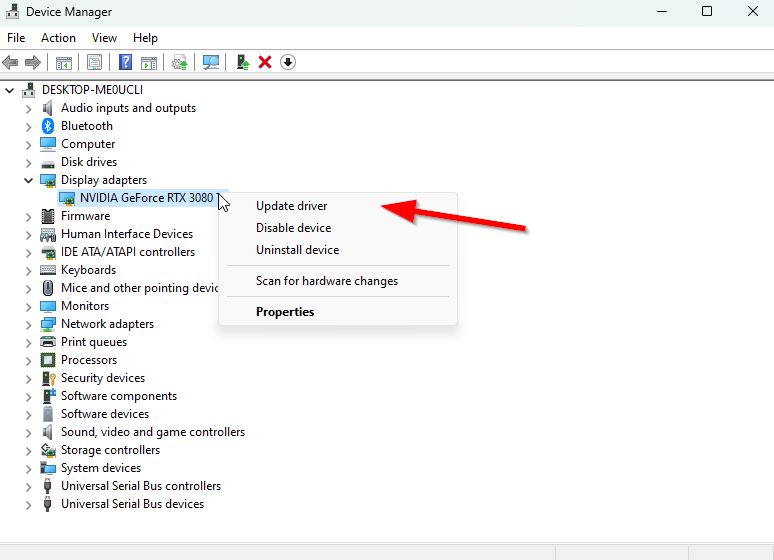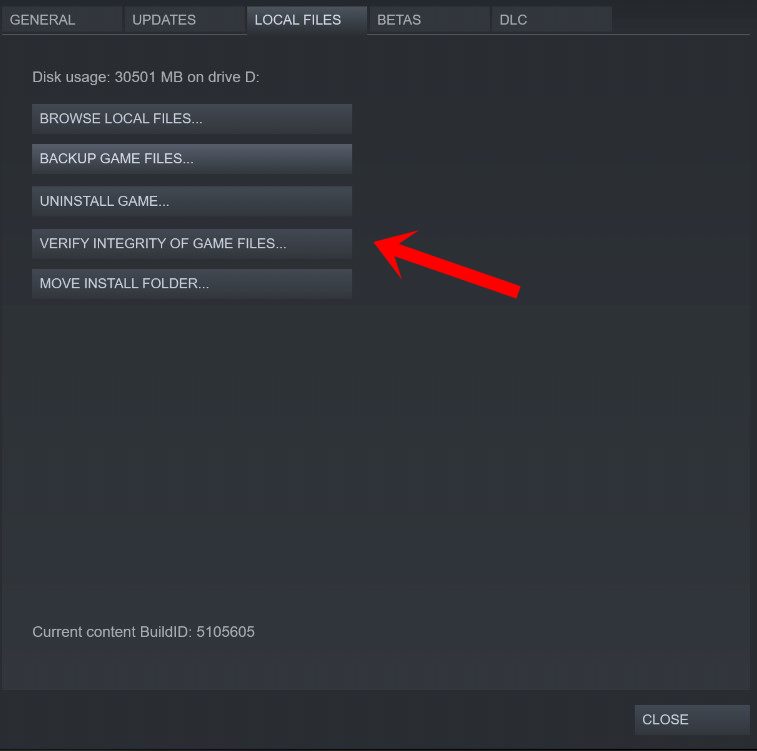FromSoftware Inc. and Bandai Namco Entertainment have a souls-like dark fantasy PvP RPG ‘Elden Ring‘ in Feb 2022 that has received hundreds of positive reviews on multiple platforms. However, it may be possible that your game isn’t working well on your PC, even with the dedicated graphics card. Now, if you’re one of the victims, you can check the Elden Ring Best Graphics Settings for 3070, 3080, 3090, 1060, 1070, 2060, 2080, and more guides to know better.
To be precise, getting better graphics quality along with a smoother gameplay experience always requires a higher FPS count. While the Nvidia GTX and RTX series graphics card users always expect more out of their graphics card when it comes to hardcore gaming. Meanwhile, players can get optimal frame rates consistently with a medium range of graphics visuals even on a mid-range PC build, but the in-game graphics settings should be adjusted for the same.
Also Read
All Elden Ring Error Codes and Their Solutions
All Elden Ring Error Codes and Their Solutions
Elden Ring Connection Error Occurred, How to Fix?
How to Fix ELDEN RING Long Load Times
Elden Ring Subtitles: How to Change Subtitles Language, Fonts, and Size
Steam Deck Elden Ring Crashing, Not Launching, and Other Fixes
Fix: Elden Ring Subtitles Out of Sync or Not Showing Up
Elden Ring Soft Caps For Each Stat and Attribute
Fix: Discord Doesn’t Work While Playing Elden Ring
Elden Ring Blasphemous Blade Build Guide

Page Contents
Elden Ring Best Graphics Settings for 3070, 3080, 3090, 1060, 1070, 2060, 2080, and More
As we’ve mentioned above, graphics optimizations might offer you at least 60 FPS count in the gameplay with 1080P resolution if your PC build isn’t that powerful or the graphics card is Nvidia GTX 1060 or 1070. While the mid-ranger RTX 2060, 2080, and the top-tier RTX 3070 or 3080 or 3090, etc GPU card models are capable to deliver a minimum of 60-80 FPS normally. You can also get more than 100 FPS in 2K or 4K resolution on some games with 30 series.
As far as you can reduce the in-game stutters, lags, visual glitches, etc you’ll be good to go. By having a few optimizations in the graphics settings, your game should run at least 60 FPS consistently throughout the session without any major frame drops, lags, stutters, visual glitches, etc. No matter how powerful your PC build is configured or how powerful your graphics card is there, the in-game graphics adjustments always bring a stable experience.
Sometimes higher or incompatible settings can overheat components and causes lags or FPS drops. Here we’ve mentioned a couple of workarounds and in-game graphics settings adjustments for you that might help a lot to achieve 60 FPS or more than that. Do keep in mind that depending on your graphics card performance and PC specification, the frame rate count will go higher. So, without wasting any more time, let’s jump into it.
Also Read
Fix: Low FPS Using NVIDIA Graphics Card After Windows 11 Update
What Is the Recommended Meta PvP Level in Elden Ring?
Elden Ring: All Dungeons Locations and Their Bosses
Elden Ring Tombsward Catacombs Entrance, Secret Room, Location and Boss
What is the Recommended Level For Each Boss in Elden Ring
Elden Ring Best Starting Class For All Builds
Elden Ring Maiden Blood Location
Fix: Elden Ring Inappropriate Activity Detected
Fix: Elden Ring Map Not Showing or Loading
Best Nvidia Control Panel Settings for FPS and Performance Improvement
1. Check System Requirements
Before heading over to the other workarounds, you should cross-check whether your PC build is compatible enough with this game’s requirements or not. Sometimes compatibility issues may occur with several conflicts with the game launching or running smoothly on the PC that plenty of players may avoid unintentionally. Here we’ve provided the minimum and recommended system requirements of the game that you can check out.
Minimum:
- Requires a 64-bit processor and operating system
- OS: Windows 10
- Processor: INTEL CORE I5-8400 or AMD RYZEN 3 3300X
- Memory: 12 GB RAM
- Graphics: NVIDIA GEFORCE GTX 1060 3 GB or AMD RADEON RX 580 4 GB
- DirectX: Version 12
- Storage: 60 GB of available space
- Sound Card: Windows Compatible Audio Device
Recommended:
- Requires a 64-bit processor and operating system
- OS: Windows 10/11
- Processor: INTEL CORE I7-8700K or AMD RYZEN 5 3600X
- Memory: 16 GB RAM
- Graphics: NVIDIA GEFORCE GTX 1070 8 GB or AMD RADEON RX VEGA 56 8 GB
- DirectX: Version 12
- Storage: 60 GB of available space
- Sound Card: Windows Compatible Audio Device
As you can see in the requirements, you’ll need at least Nvidia GTX 1060 (3GB) or AMD RX 580 (4GB) graphics card to become eligible to run the game. With the GTX 1060 graphics card, you can easily achieve the 60 FPS gameplay based on 1080P resolution quality but there are some graphics adjustments that should be followed. You can check out the recommended graphics settings below. While the higher graphics card model will eventually offer higher FPS.
2. Get a Minimum of 60 FPS with Optimal Graphics Settings
You should follow the in-game tweaks below on your PC to get an optimized gaming experience no matter which Nvidia graphics card you’re using. There are plenty of Nvidia graphics cards available that can also deliver optimal performance. So, nothing to worry about that your specific graphics card model by Nvidia isn’t mentioned here. Turning off or lowering down some graphics settings should increase up to 10 FPS count which might be sufficient.
Make sure to just launch the Elden Ring game on your computer and head over to the graphics settings menu to perform adjustments.
- Texture Quality: Medium
- Antialiasing Quality: Low or Medium
- SSAO: Medium
- Depth of Field: Off
- Motion Blur: Off
- Shadow Quality: High or Medium
- Lighting Quality: Medium
- Effects Quality: Medium
- Volumetric Quality: High
- Reflection Quality: High or Medium
- Water Surface Quality: Low
- Shadow Quality: Medium or Low
- Shader Quality: Medium or High
- Global Illumination Quality: High or Medium
- Grass Quality: High or Medium
- Other Options should be set to High or Maximum
Note: According to multiple reports, after applying the best graphics settings for Elden Ring, AMD RX 580 graphics card users have got around 37 FPS at 1440P (2K) resolution which isn’t that bad. Without the optimization, the game was offering around 29 FPS so the optimization has really done the job well. So, it’s highly recommended to use the 1080P (Full-HD) resolution for your gaming rig if you’re using GTX 1060/1070 to get 60 FPS easily.
With the Nvidia RTX 3070 or 3080 or 3090 or 3090 Ti lineup graphics card, you will be able to get around 80-100 FPS on Elden Ring at 2K (1440P) resolution. While the 4K resolution gameplay should offer you around 60 FPS without breaking any sweat. If we talk about the 1080P resolution, you’ll get 100+ FPS using RTX 30 series GPU. Obviously, you’ll get slightly better performance if you adjust the graphics settings as mentioned above.
3. Adjustments for Nvidia Control Panel
You can head over to the Nvidia Control Panel application and try performing the following adjustments to ensure your game will run slightly better without screen tearing.
- V-Sync (Vertical Sync) – OFF
- Tripple buffering – ON
- Maximum pre-rendered frames – 1
4. Update Graphics Drivers
The chances are high that an outdated or missing graphics driver is somehow conflicting with the heavy graphics games. Make sure to check for the graphics driver update and install the same on the PC so that your game can run fine. To do that:
- Right-click on the Start Menu to open up the Quick Access Menu.
- Click on Device Manager from the list to open the interface.
- Now, you’ll need to double-click on Display adapters to expand it.

- Then right-click on the dedicated graphics card name you’re using to bring the context menu.
- Next, click on Update driver > Choose Search automatically for drivers.
- The system will automatically check for the available update.
- If an update is available, it’ll automatically download and install the latest version.
- Once done, make sure to restart your PC to apply the changes.
If there is no update showing to you, make sure to visit the official website of the graphics card manufacturer and search manually for the latest graphics driver update. If a new version is available, just download and install the file on your PC. Whatever Nvidia graphics card you use, jump to the link below as per the manufacturer.
5. Switch to Dedicated GPU
Sometimes the game may run with the integrated HD graphics on the PC that comes with the processors to handle minimal graphics tasks. But if you’re using an external Nvidia graphics card then make sure to switch the Elden Ring game to the dedicated GPU by following the steps below.
- Right-click on the desktop screen to open the context menu.
- Now, click on Nvidia Control Panel to open it.
- Head over to 3D Settings > Select Manage 3D Settings.
- Open the Program Settings tab > Choose Elden Ring from the drop-down menu.
- Select the preferred graphics processor for this program from the drop-down menu.
- You can see High-Performance Nvidia Processor and save changes.
- Finally, reboot the PC to apply changes.
6. Verify and Repair Game Files
It may be possible that your game files are missing or corrupted on the PC due to some unexpected reason and the problematic game files are conflicting. It’s better to verify and repair the game files on the PC by following the steps below to fix potential issues.
- Launch the Steam client > Click on Library.
- Right-click on Elden Ring from the list of installed games.
- Now, click on Properties > Go to Local Files.

- Click on Verify Integrity of Game Files.
- You’ll have to wait for the process until it gets completed.
- Once done, just restart your computer.
7. Try Disabling Overlay Apps
It’s also recommended to disable overlay applications on the PC which are unnecessarily running in the background. These overlay apps consume system resources a lot and cause performance issues that will occur in FPS drops or lags. You should always turn off overlay apps temporarily to check whether the game is running fine or not.
Disable Discord Overlay:
- Launch the Discord app > Click on the gear icon at the bottom.
- Select Overlay under App Settings > Turn on the Enable in-game overlay.
- Click on the Games tab > Select Elden Ring.
- Finally, Turn Off the Enable in-game overlay toggle.
- Make sure to reboot your PC to apply changes.
Disable Xbox Game Bar:
- Press the Windows + I keys to open Windows Settings.
- Click on Gaming > Go to Game Bar > Turn off Record game clips, screenshots, and broadcast using the Game bar option.
Disable Nvidia GeForce Experience Overlay:
- Launch the Nvidia GeForce Experience app > Head over to Settings.
- Click on the General tab > Disable the In-Game Overlay option.
- Finally, restart the PC to apply changes, and launch the game again.
Disable Steam Overlay:
- Open the Steam client on the PC > Click on Library.
- Right-click on Elden Ring from the left pane > Select Properties.
- Now, click on General > Turn OFF the ‘Enable the Steam Overlay while in-game’ option.
There are some other overlay apps that can cause trouble for you something as MSI Afterburner, Rivatuner, RGB software, etc. You should turn them off as well.
8. Update Elden Ring
An outdated game patch version can also cause several issues with the in-game performance whatsoever. Make sure to check for the latest game updates and install them whenever available. A new patch version mostly fixes bugs and brings improvements to the previous version. To do that:
- Open the Steam client > Go to Library.
- Click on Elden Ring from the list of installed games on the left pane.
- Now, the client will automatically search for the available update.
- If there is an update available, you’ll see the Update option.
- Just click on it and wait for a couple of minutes until the game update completes. [Depends on the storage space and internet connectivity]
- Once done, make sure to close the Steam client.
- Finally, reboot your PC to apply changes
Bonus: If you don’t want to mess with the in-game graphics settings then you can directly open the Nvidia GeForce Experience app and click on Optimize to get the optimized Elden Ring Settings immediately without trying additional tweaks manually.
That’s it, guys. We assume this guide was helpful to you. For further queries, you can comment below.
Also Read
